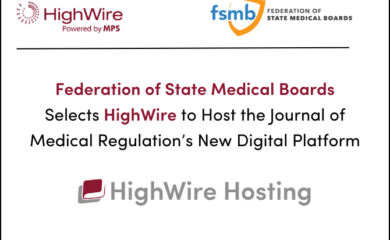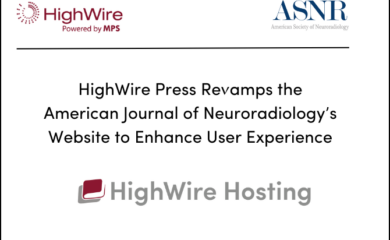Artificial Intelligence has moved from the periphery to the heart of scholarly publishing. What began as curiosity about tools like ChatGPT has evolved into serious conversations about manuscript preparation, peer review, editorial workflows, and even the definition of authorship itself. AI is no longer an optional enhancement—it’s becoming integral to the way knowledge is created, evaluated, and disseminated.
Yet, with all its promise, AI brings challenges that publishing professionals must confront head-on: hallucinated facts, biased outputs, legal uncertainties, and issues of accessibility and trust. Understanding how to responsibly deploy these tools while upholding the integrity of the scientific record is now one of the most urgent priorities in academic publishing.
Generative AI: Potential and Pitfalls
Generative AI (GenAI) is often praised for its ability to draft text, summarize content, and enhance language. But it is important to understand what it is: not a creative thinker, but a word prediction engine. It reflects, amplifies, and reshuffles patterns from its training data. It does not understand truth or originality. As one presenter put it: “GenAI is a mirror, not a crystal ball.”
This duality—powerful yet flawed—defines the landscape we are entering. AI can:
- Summarize a 3,000-word discussion section into a 250-word abstract.
- Suggest keywords for search optimization in databases.
- Translate non-English research into fluent, polished English.
- Improve readability for broader audiences or patient summaries.
But it can also:
- Fabricate citations.
- Miss novel insights.
- Perpetuate outdated or biased language.
- Generate content that looks polished but lacks scientific rigor.
That’s why human judgment remains indispensable. AI can help carry the load—but it cannot yet shoulder the responsibility.
Prompting Matters: The Right Input Shapes the Output
Getting high-quality results from AI depends largely on how you ask. Prompting is an emerging editorial skillset—and there are best practices:
- Clarity: Use unambiguous language (e.g., “Summarize this article for a high school science class”).
- Context: Provide background (e.g., “This article is for a cardiology journal”).
- Constraints: Impose limits (e.g., “Limit to 150 words and cite three references”).
- Format: Include examples of desired output.
Advanced prompting strategies include:
- Role Prompting: “You are a senior peer reviewer evaluating a neurology case report.”
- Chain-of-Thought Reasoning: “Let’s think step-by-step about this statistical result…”
- Few-Shot Learning: Provide examples of well-structured abstracts or plain-language summaries.
Some tools are even experimenting with reflexion, where the AI critiques and revises its own outputs. Still, every step must be checked. For instance, when ChatGPT was tasked with creating an abstract from a published article, it delivered fluent prose—but it overemphasized minor points and missed the article’s actual novelty. Human editors were essential in correcting and refining it.
Editorial Use Cases: From Preparation to Decisioning
AI is being applied across every phase of the publishing workflow:
Manuscript Preparation
- Grammar and Style: There are several tools to help refine tone, syntax, and clarity.
- Translation: DeepL and Google Translate are invaluable for multilingual submissions.
- Citation and Referencing: Tools can automate bibliography formatting and recommend related literature.
Peer Review Assistance
- Submission Triage: AI flags poor-quality or off-scope manuscripts, and detects potential plagiarism or image manipulation.
- Reviewer Matching: Semantic analysis recommends reviewers based on manuscript content.
- Reviewer Support: Some tools draft review templates or suggest overlooked citations.
- Editorial Decisioning: AI can synthesize reviewer feedback and identify discrepancies between reviewer comments and scores.
- Post-Review Analysis: Track review timelines and detect review manipulation or conflicts of interest.
A word of caution emerged from a real-world example: a reviewer uploaded a confidential manuscript to an AI tool to check for AI-generated writing. While the intent was quality assurance, this breached confidentiality and highlighted the need for policy frameworks and disclosure mechanisms.
Editorial Screening
- Quality Assessment: AI performs initial triage to identify submissions not meeting journal standards.
- Image Analysis: Automated tools flag possible figure manipulation.
- Statistical Verification: Algorithms can assess whether data analysis supports conclusions.
- Efficiency Gains: By handling these baseline checks, AI allows editors to focus on nuanced, context-dependent decisions.
Ethical Frameworks: Use Responsibly, Not Secretly
Attempts to ban AI tools entirely are likely to fail. Users—authors and reviewers alike—are already experimenting, often without disclosure. That’s why transparency must be the foundation of any ethical AI policy.
A five-point AI ethics primer helps frame this:
- Disclose, Don’t Forbid: Make disclosure routine rather than stigmatized.
- Recognize Bias: AI replicates the bias of its training data; vigilance is key.
- Maintain Accountability: People, not machines, are responsible for outputs.
- Avoid AI Shaming: Creating a culture of fear will push use underground.
- Protect Confidentiality: Don’t enter private data into public LLMs.
Many publishers are starting to require AI disclosure in submission forms and peer review reports. Others are investing in closed-loop LLMs—private systems that don’t leak data and offer more consistent performance.
Accessibility and Inclusion: Don’t Leave Anyone Behind
AI can streamline publishing—but it can also reinforce inequities if we’re not careful. Technical and UX barriers are real:
- Screen readers often struggle with AI-generated visualizations.
- High cognitive load and inconsistent interfaces can overwhelm new users.
- Language barriers and paywalls continue to restrict access in under-resourced settings.
To address these issues, the following strategies are emerging:
- Require accessible AI tools in vendor procurement processes.
- Provide training for users with varied technical backgrounds.
- Collaborate across publishers to develop common accessibility standards.
- Support inclusive AI research that accounts for global and linguistic diversity.
A Vision for the Future
As AI becomes more embedded in scholarly publishing, we may see:
- Machine-readable articles with structured metadata and annotations optimized for both human and AI consumption.
- Personalized article delivery—where the same paper appears differently based on whether the reader is a human or a machine.
- Review workflows that include automated critique, reviewer augmentation, and structured transparency from submission to publication.
AI is not a replacement for editorial expertise—it’s a co-pilot. But like any co-pilot, it needs a skilled human at the controls.
Final Thoughts
AI offers incredible opportunities to streamline and enrich scholarly publishing. But that potential comes with responsibilities: to use it wisely, disclose its involvement, and remain vigilant about bias, equity, and trust. Whether integrating AI into your editorial system or refining a manuscript prompt, the principles are the same:
Experiment. Educate. Share. Augment. Do not be scared.
With the right guardrails and a commitment to responsible innovation, AI can be a force for good in research communication—amplifying not just words, but impact.
– By Tony Alves



